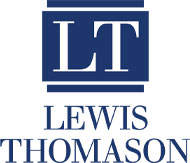Probably not.
When I saw the opinion was released, I was initially hopeful that the Tennessee Supreme Court’s April 29, 2020 opinion of Martin v. Rolling Hills Hospital, LLC, may be the last Section 121 non-compliant HIPAA release case I would ever need to read. Perhaps—finally—all of the often-convoluted issues that have festered for the past decade would be put to rest. While, to be sure, at least a couple of issues that frequently come up in these cases were squarely addressed, the framework established by this opinion is likely to result in continued litigation in cases involving challenges to a plaintiff’s compliance with Section 121 in providing healthcare liability pre-suit notice recipients with a valid HIPAA disclosure authorization.
In recognizing “Tennessee law is less than settled concerning the question of substantial compliance, particularly with respect to [Tennessee Code Annotated section 29-26-121(a)(2)(E)]” (op. at 12), the Tennessee Supreme Court took “this opportunity to clarify the role of prejudice in a court’s determination of whether a plaintiff in a health care liability action has substantially complied with Section 121” (op. at 13). Reaffirming the approach in Stevens v. Hickman Community Health Care Services, Inc., the Tennessee Supreme Court stated, “prejudice is not a separate and independent analytical element.” Instead, “prejudice is a consideration relevant to determining whether a plaintiff has substantially complied.” (Op. at 13.) In practice, I think that this is a distinction many trial courts are going to struggle with making.
The potential for confusion and blurry-line analysis is demonstrated by the court’s statements about what trial courts are to take into account when determining the presence or absence of prejudice:
“If a plaintiff’s noncompliance with Section 121 frustrates or interferes with the purposes of Section 121 or prevents the defendant from receiving a benefit Section 121 confers, then the plaintiff likely has not substantially complied with Section 121. . . . On the other hand, if the plaintiff’s noncompliance neither frustrates or interferes with the purposes of Section 121 nor prevents a defendant from receiving a benefit the statute confers, then a court is more likely to determine that the plaintiff has substantially complied.” (Id.)
The court also set out to clarify the often-muddied waters in determining the “burdens each party bears when seeking to establish or to challenge compliance with Section 121.” In expressly adopting the burden-shifting approach articulated in Myers v. AMISUB (SFH), Inc., the Tennessee Supreme Court held “a health care liability plaintiff bears the initial burden of establishing compliance with Section 121 by stating in the pleadings and providing the documentation specified in subdivision (a)(2).” (Id. (internal quotations omitted).) A defendant challenging the Section 121 compliance must show in its Rule 12 motion that the release was defective and the resulting prejudice. While it has generally been well-established that a defendant must specify how the plaintiff failed to comply with Section 121 (i.e., how the HIPAA authorization was deficient), there has been some lingering question about the demonstration of prejudice. In meeting a defendant’s burden of showing prejudice, the court stated a “defendant may demonstrate that the noncompliance resulted in prejudice by explaining—for example—how the noncompliance frustrated or interfered with the purposes of Section 121 or deprived the defendant of a benefit Section 121 confers.” (Op. at 14.) The court also repeated that defendants are not required to “test” facially faulty HIPAA releases or otherwise aid plaintiffs in meeting their burden in demonstrating any noncompliance did not result in prejudice to the defendants.
If a proper prima facie showing is made by the defendant, the burden then shifts back to the plaintiff who “bears the burden of establishing substantial compliance with Section 121, which includes the burden of demonstrating that the noncompliance did not prejudice the defense.” (Id.) Interestingly, the court cites Rule 56 summary judgment motion language and cases as an example of how a plaintiff may accomplish this. In doing so, future Section 121 motions to dismiss may be more frequently converted into summary judgment motions. However, courts (including the Tennessee Supreme Court in this case) have been clear that these challenges are to be in the form of Rule 12.02(6) motions to dismiss.
Unfortunately, I don’t think this case is the last word on this matter. As the Tennessee Supreme Court noted from one early commentator, if claimants submitting pre-suit notices would follow a checklist, the volume of these cases would likely diminish. (Op. at 15 n.9.) The statute has been on the books for well over a decade but, as evidenced by this case and volumes of recent cases from the Tennessee Court of Appeals, claimants and their lawyers still struggle to comply. Until claimants get Section 121 figured out, namely with providing valid HIPAA disclosure authorizations, we will continue to read opinions from the appellate courts. While the prejudice-finding-framework outlined in the Martin case, along with the solidification of the burden-shifting standard, will be helpful to trial courts, there remains a significant swath of gray area for parties to argue in before both trial and appellate courts.
You can read the opinion [here], along with Justice Kirby’s dissenting and concurring opinion, which can be read [here].





